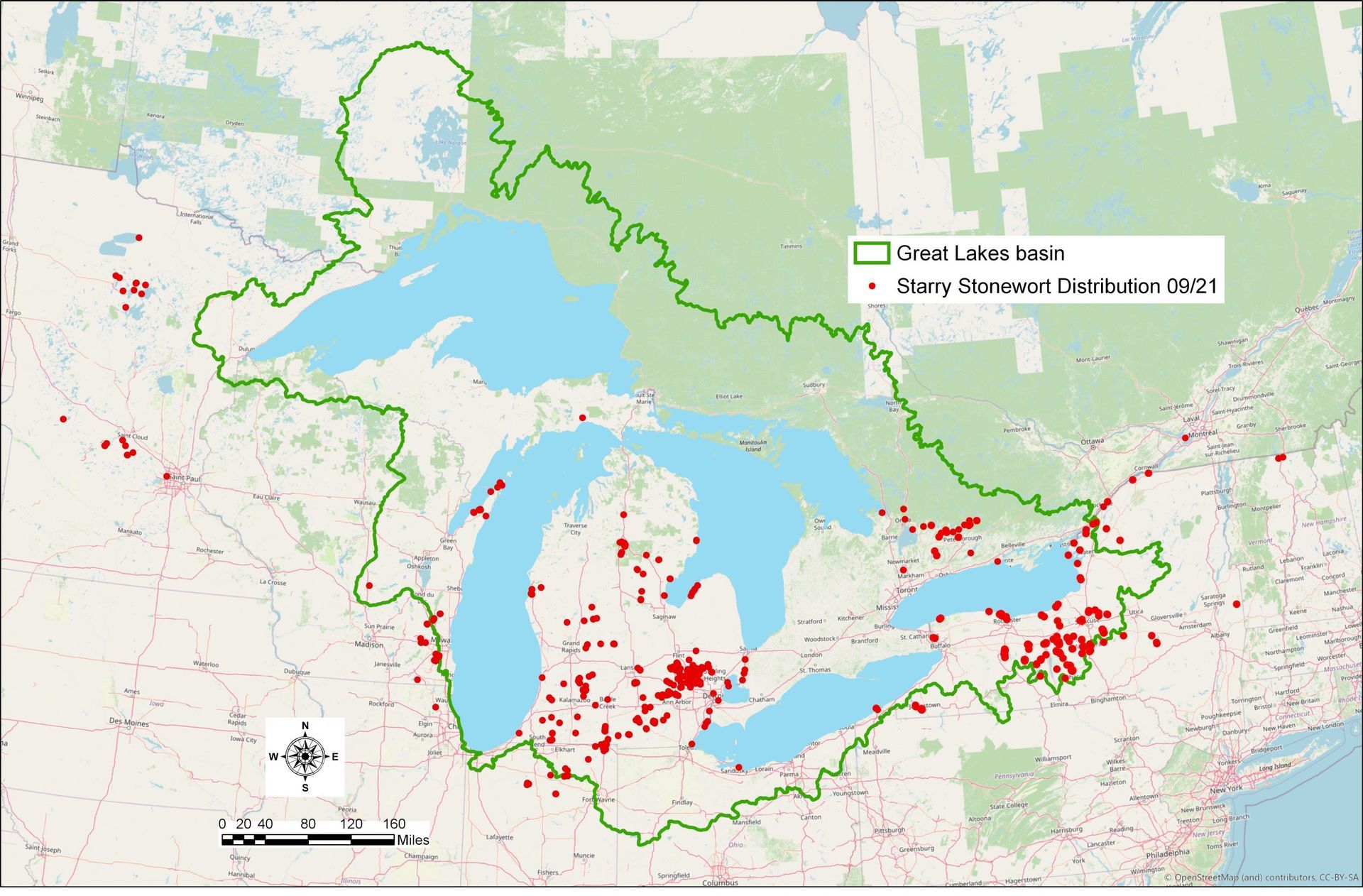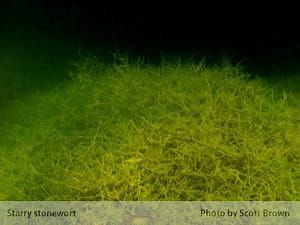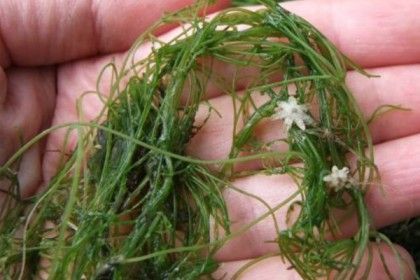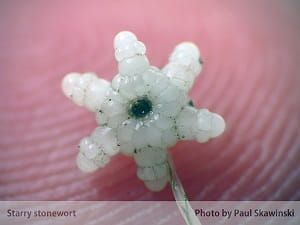Starry Stonewort Cruising Through the Great Lakes
Michigan hosts two free fishing weekends per year to encourage more residents to experience this form of recreation. This weekend, February 15-16, is the first free fishing weekend of 2025 in concurrence with another major event. As of yesterday, the 2025 World Ice Fishing Championship has kicked off with training at Tamarack Lake in Lakeview, Michigan hosted by the US Angling Confederation. With ten nations participating in this competition and many never fishing the 330 acres of Tamarack Lake, investigating the environmental conditions including depth and vegetation can be pivotal. Additionally, understanding the preferences and habits of target fish is critical for success in lakes with complicated structures. However, it is also important to consider the invasive species of the lake and how they may impact the behaviors of native species. According to the Montcalm County Lake Improvement Board, starry stonewort, elodea, Eurasian watermilfoil, and curly leaf pondweed are a few of the aquatic invasive species in Tamarack Lake.
History
Starry stonewort (Nitellopsis obtusa) originated from Europe and western Asia where it can be uncommon to find and is considered endangered in the United Kingdom. In contrast, it has now spread throughout the Great Lakes region into the northeast of the US. While the first positive record identifying this species occurred in 1974 in the St Lawrence Seaway, the species made its way upstream to Michigan by 1983 as identified by the State of Michigan’s Status and Strategy for Starry Stonewort Management. Within Michigan waters, this macroalgae has demonstrated a pattern with most growth from July to August moving into the season of die-back. This species can spread via asexual reproduction and fragmentation by recreation (boats) and wildlife.

Current Status
Starry Stonewort is considered prohibited by the Michigan Department of Natural Resources making possession unlawful. To be an invasive species, an organism must have originated elsewhere and caused some sort of harm to the native ecosystem after introduction. This macroalgae poses a threat due to the dense mats limiting the ability of native plants to grow while reducing the overall number of species present. As for the aquatic animals, the mats that cover the bottom of the water body limit fish movement impacting spawning, altering water flow, and causing issues for recreation.
Characteristics
This species creates dense weed beds up to 33 inches in length as defined by the Michigan DNR. True to name, there are also distinctive star-shaped bulbils that range from 3 to 6 mm in diameter with whorls of 4-6 leaves. While the bulbils resemble flowers in shape, these structures can be found on the algae year-round.
Chara (muskgrass) is a native look-alike as it also forms dense beds on water bottoms with a distinct skunk odor according to the Michigan DNR. This species is also a type of algae with similarities to plants, however, there is no flower or bulbil present on Chara according to Texas A&M. Additionally, this species is more brittle in texture and branches with 6 to 16 whorls. It is important to identify the differences between both invasive and native species to ensure any removal is not impacting native species.

Conservation
Preferring slow moving water like lakes, ponds, and reservoirs, this species can survive in a range of depths from three to 95 feet. Survey methods like Ponar grabs, wading and dredging, anchor drags, rake methods, and strategized snorkeling can help aid in early detection.
Boat washing stations have been great additions to various boat launches to help control the spread of aquatic hitchhikers. The ability to spread by fragmentation is evident in the populations typically spreading from docks and marinas. Montcalm County Lake Improvement Board hosted a meeting regarding Tamarack Lake’s treatment for aquatic invasive vegetation starting in 2021. Starry stonewort was first acknowledged by the board in 2022 near the dock where it was considered the next species for treatment. This highlights the importance of awareness in decontamination to prevent aquatic and terrestrial hitchhikers on equipment.
While boat washing is a simple step in increasing awareness for recreationists and the public, an integrated pest management program (IPM) is the most effective. While there are options for chemical and mechanical control, there are no known biological controls aside from competition of native plants.

Control
Chemical
Some combination of copper-based algaecides and non-copper herbicides have been used to control starry stonewort. However, these treatments can lead to a negative impact on native aquatic vegetation indicating the need for more deliberation. EGLE restricts this chemical treatment in areas where native species are present to prevent unintentional die-offs.
Mechanical
Physical harvesting including the use of divers to remove this invasive can be done for smaller populations. However, there is no data collected to assess the impact of fragmentation during these processes in furthering the spread. Additionally, understanding the preferred environment of starry stonewort reveals the species' small tolerance for desiccation, allowing drawdowns to be considered a control method. A different aquatic invasive with similar characteristics was controlled in Europe utilizing biodegradable benthic barriers. A current study of this strategy in Michigan populations of starry stonewort is being conducted at a small scale.
Learn More
While aquatic professionals are keeping an eye out for aquatic invasive species, the public plays a key role in understanding the implications of these species and being able to identify and report the locations to sound the alarm. Reports can be made for the invasive species of Michigan to the Midwest Invasive Species Information Network (MISIN) online or through the app. Our On the Ground (OTG) program works across the state with volunteer stewards to remove invasive species from the landscape and improve habitat for wildlife. Check out our OTG website to find more information about our upcoming volunteer opportunities.





